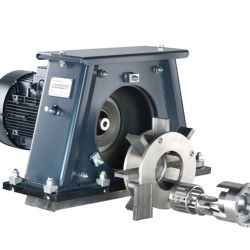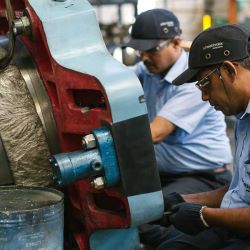Sieving, screening, separating – the high-tech way
Anyone at Wheelabrator who’s involved in automotive applications will have been talking or thinking a lot about complexity and control recently.
More complex internal geometries of parts, more tightly integrated processes, fiendish peening specs, exact repeatability of results – the sector is certainly keeping us on our toes.
An example of how these trends affect every aspect of the blast machine and beyond, is the impact they are having on the humble process of sieving.
Sieving, screening and separating of abrasive in automotive applications has evolved into – you guessed it – a pretty complex affair.
Alien objects
First of all, internal areas of engine, transmission and chassis parts are becoming more intricate. We’ve been spending a lot of time upgrading sieves, screens and separators on customer machines to ensure there is no debris left in the abrasive.
This debris could get stuck in “working” cavities – i.e. internal areas that will be used to carry lubricant or to house mechanical components.
Intricate lubrication systems in automatic gearboxes, for example, are made up of very fine control channels running through the housing. If these are blocked due to particles of a certain size remaining in the abrasive, the whole gearbox could eventually stop working properly.
This problem tends to be very specific to the workpiece, which means very targeted sieving is needed, tailored to the particle size that would cause a problem.
Peening precision
Another sieving and separating challenge is to maintain an ever more narrowly defined range of abrasive sizes in the mix for advanced peening applications.
The precision peening processes used in Automotive today require tightly controlled parameters to guarantee the specified blast results.
This means our sieving and screening has to match this precision and only retain abrasive particles of exactly the right blast media size within the cycle.
It’s a sieve – how complex can it possibly be?
Whether it’s removing dangerous debris or abrasive particles that are no longer up to spec, advanced screening and separating technology to achieve the result is – in principle – easily available.
The challenge lies in the logistics of it. Highly advanced stand-alone sieve units with complex multi-step processes are available from specialist suppliers. However, these rarely fit into a typical Automotive production environment, where space is at a premium and machines are tightly integrated.
It’s down to my team here at Wheelabrator to integrate high-performance sieve technology into existing equipment, without negatively affecting cycle times or blast performance. This means making it part of the existing abrasive cycle and tailoring screening processes to achieve the very specific outcome required for an application.
Inevitably, the screens we’re integrating have to be much smaller than a standalone unit would be. We also have to take into account that we’re pushing around 40t of abrasive per hour through, for example, a fine and fairly compact vibro sieve.
How it’s done
How do we do that without making the whole machine prone to failure and downtime? We’ve completed a couple of these types of upgrade now and the secret lies in fully understanding both machine and process, to select exactly the right configuration and sequence of screening and separation steps.
This may include different types of screens and separators, magnetic or air wash, all fine-tuned to hit a precise specification. All abrasive logistics are then, ideally, automated, to ensure maximum control of all parameters. Maintenance access to sieves and screens is also key and we like to make it as easy as possible to remove and exchange sieves for cleaning, keeping downtime to a minimum.
In summary, the important message here is: yes, automotive parts are becoming more intricate and complex; and yes, blast processes in turn are becoming more sophisticated, whilst the margin for error is narrowing – BUT, we can always find a solution.
Sometimes that solution involves a very special sieve.


